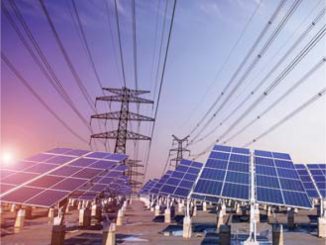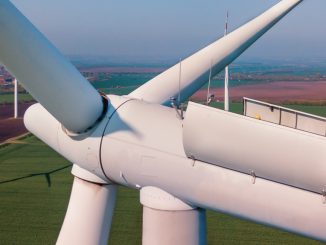
India has launched a number of energy efficiency initiatives in an effort to reduce its carbon impact. These inlcude implementing projects based on cogeneration and trigeneration.
Over the past year, the Government of India has rolled out several policies and financial/non-financial incentives to catalyse growth in these sectors. Notably, in November 2022, the National Bioenergy Programme was notified by the Ministry of New and Renewable Energy. The programme comprises two phases, and Rs 8,580 million has been allocated as capital under the first phase. Under the mission, central financial assistance (CFA) has also been offered for various subsegments of bioenergy.
Cogeneration technology
Cogeneration utilises heat that would otherwise be wasted to provide additional energy advantages, such as heating or powering the building in which it is operating. It also benefits the environment, since it recycles waste heat instead of using polluting fossil fuels. Compared to purchasing electricity from the grid and gas for a boiler separately, cogeneration – a highly efficient method of energy conversion – can save the primary energy component by 35 to 40 per cent. Combined heat and power (CHP) can be a sustainable source of energy and heat if a gas engine’s fuel is renewable, such as biogas, hydrogen, syngas or biomethane.
CHP facilities are usually located close to the end consumer, thus reducing transportation and distribution losses and enhancing the efficiency of the entire electricity transmission and distribution network. These facilities are used to produce heat and power for a group of residential or commercial buildings. Gas-based cogeneration systems are perfect for use as captive power plants for power consumers for whom supply security is a key consideration when choosing the equipment for power output. It can increase a site’s resilience in case of an electrical grid outage, because it is a localised source of power generation.
Cogeneration power plants generally have efficiencies that are 50-70 per cent higher than single-generation power plants. A CHP plant’s high efficiency in comparison to conventional electrical generators and on-site boilers, and the site-produced heat, offer a variety of advantages, including on-site power generation, lower energy costs and decreased pollutants.
Bagasse-based cogeneration in sugar mills and biomass power generation have been taken up under the biomass power and cogeneration programme. This programme is being implemented with the main objective of promoting technologies for optimum use of the country’s biomass resources for grid power generation. As of March 2022, a total capacity of 10,682.36 MW has been installed in the biomass power and cogeneration sector, which includes 476.75 MW of waste-to-power and 10,205.61 MW of biomass (bagasse and non-bagasse) cogeneration.
Under the recently approved bioenergy programme, for briquette/pellet manufacturing plants, CFA of Rs 0.9 million per MTPH has been designated, with a maximum CFA cap of Rs 4.5 million per plant; whereas for biomass (non-bagasse generation) cogeneration projects, CFA of Rs 4 million per MW of installed capacity has been allotted.
As per a recent study sponsored by the Ministry of New and Renewable Energy, the current availability of biomass in India is estimated to be about 750 million metric tonnes per annum. The study estimates a surplus biomass availability of about 230 million metric tonnes per annum, covering agricultural residues corresponding to a potential of about 28 GW. Apart from this, about 14 GW of additional power can be generated through bagasse-based cogeneration at the country’s 550 sugar mills, if they adopt technically and economically optimal levels of cogeneration for extracting power from the bagasse produced by them.
The country’s sugar industry has been traditionally practising cogeneration by using bagasse as a fuel. With the advancement in generation technology and by utilising steam at a high temperature and pressure, the sugar industry can produce electricity for its own requirements. It can also produce significant surplus electricity for sale to the grid using the same quantity of bagasse. For example, if the steam generation temperature/pressure is raised from 400 °C/33 bar to 485 °C/66 bar, over 80 kWh of additional electricity can be produced for each tonne of cane crushed. The sale of surplus power generated through optimum cogeneration would help a sugar mill improve its viability, apart from adding to the power generation capacity of the country.
Trigeneration potential
Trigeneration, also known as combined cooling, heat and power (CCHP), is the process of utilising a portion of the heat produced by a cogeneration plant to produce chilled water for air conditioning or refrigeration. CCHP systems are the same as CHP systems, with an added unit for cold water production. Cold water can be used in refrigeration and air conditioning.
Compared to a conventional power plant with the same fuel usage, a CCHP system has greater capabilities. In a conventional power plant, around 30 per cent of the fuel input may be utilised to produce electricity, with the remaining energy being released into the atmosphere as waste heat. With a CCHP system, the generated heat is recovered, and the system’s efficiency may reach up to 90 per cent. An absorption chiller is connected to a CHP system in order to enable this capability. Due to the absence of moving components, absorption chillers undergo little to no wear and tear, which lowers their operation and maintenance costs. Further, the technology lowers the total life cycle cost when deployed as part of a larger solution. Many commercial and industrial sectors can benefit significantly from the installation of CCHP systems.
Trigeneration has its greatest benefits when scaled to fit buildings or complexes where electricity, heating and cooling are needed on a regular basis. These include data centres, universities, hospitals, military complexes, colleges and manufacturing facilities. Trigeneration is projected to rise dramatically in commercial establishments, hotels, airports, and large real estate developments, among others, as the country implements city gas distribution networks at a significantly faster rate.
The technology has proved effective in lowering energy expenditure and carbon emissions while also improving operating efficiency. Certain smart cities could find it appealing, since the initial phase of trigeneration deployment is restricted to areas with a reliable gas supply network. Work is under way to investigate the viability of employing liquefied natural gas transportation for remote and rural clients to whom gas supply has not yet been provided.
Challenges and the way forward
One of the limitations of these systems is that they should only be used at locations where there is a need for both heating and cooling as well as power. Even though cogeneration reduces energy costs, certain systems have high installation costs. Businesses contemplating smaller-scale installations may find it challenging to manage the required capital.
While cogeneration systems that use biogas as their main fuel are an environmentally friendly choice for energy generation, a system that runs on diesel or other fossil fuels is not eco-friendly. This offsets some of the environmental advantages of cogeneration. Overall, the use of decentralised cogeneration and trigeneration technologies could help India’s energy grid become less carbon intensive and less dependent on centralised coal-fired power generation. In addition, its environmental impact can be significantly reduced by combining CHP and CCHP systems with renewable energy sources.
Going forward, policy and regulatory frameworks should focus on boosting power sector efficiency through the implementation of cogeneration and trigeneration.



